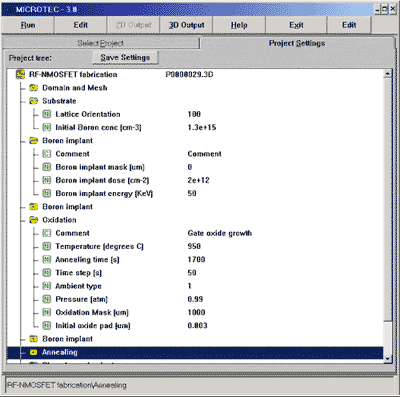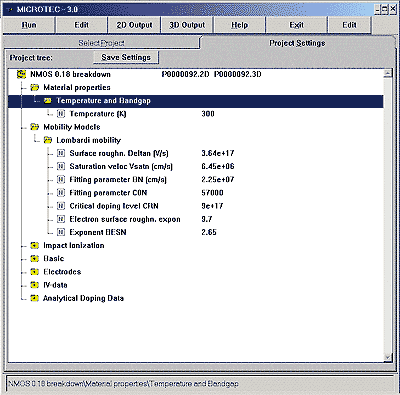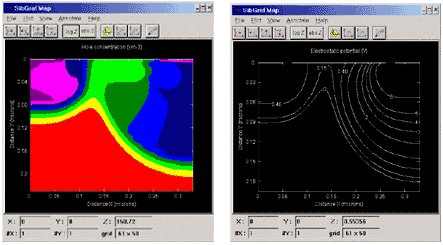









Increasing performance of IBM PCs encourage the development of software tools that can be used for 2D/3D modeling of semiconductor devices and processes on a PC. Rather severe limitations on memory and speed of computation in pervious generations of PCs forced development of new numerical techniques which formed the basis of the new generation of simulation tools. Some years ago a few efficient programs of this kind were developed which have been integrated together into a package named MicroTec.
MicroTec allows 2D silicon process modeling including implantation, diffusion, expitaxy and oxidation and 2D steady-state semiconductor device simulation including MOSFET, SOI-MOSFET, DMOS, JFET, BJT, IGBT, Schottky Devices, etc.. Although MicroTec is significantly simplified compared to widely available commerical simulators, it nevertheless is a very powerful modeling tool used for industrial semiconductor process/device design. In many instances MicroTec outperforms existing commerical tools and it is remakably robust and easy-to-use.

Top: MicroTec is especially attractive for educational purposes
due to its ease of use and robustness. It enables to develop a set of problems for a tutorial in semiconductor device physics with minimal effort. The goal of such a computer-aided course would be to give students basic ideas about the modern semiconductor device design in a realistic model environment.
 Despite apparent simplicity MicroTec covers basic needs for semiconductor process/device design complemented with efficient and flexible graphics tools. It is much easier to use than any other tool of its kind. MicroTec is a must for those who want to understand physics of semiconductor devices without knowing much about computers or numerical methods and who do not have much time for learning new process/device simulation tools. MicroTec is an excellent tool for managers, R&D engineers, students, professors and researchers and can be referred to as a TCAD calculator.
Despite apparent simplicity MicroTec covers basic needs for semiconductor process/device design complemented with efficient and flexible graphics tools. It is much easier to use than any other tool of its kind. MicroTec is a must for those who want to understand physics of semiconductor devices without knowing much about computers or numerical methods and who do not have much time for learning new process/device simulation tools. MicroTec is an excellent tool for managers, R&D engineers, students, professors and researchers and can be referred to as a TCAD calculator.

Top: MicroTec is based on the diffusion-drift model and employs finite difference technique on a rectangular, auto-adjusting mesh.
MicroTec-3.05 is a true 32-bit application for Windows 95, 98, NT and 2000, and can be run on any PC-386 or higher. MicroTec-3.05 uses dynamic memory allocation. There is no memory threshold so it can be used even on a computer with only 1 Mbyte memory if the mesh size is not larger than about 2,000 nodes.
Typically commercially available tools require about 20 Mbyte memory for a mesh size limited by 3,500 nodes. MicroTec-3.05 device simulation tools require about 8 Mbytes of memory for a 20,000 node mesh. Typical CPU time for one I-V point is less than 10 seconds on a Pentium PC when using 1,000 nodes.
For the process simulation tool, about 4 Mbytes of memory is required for a 20,000 node mesh. Simulation of a typical technological route requires about a minute CPU time on a Pentium PC.